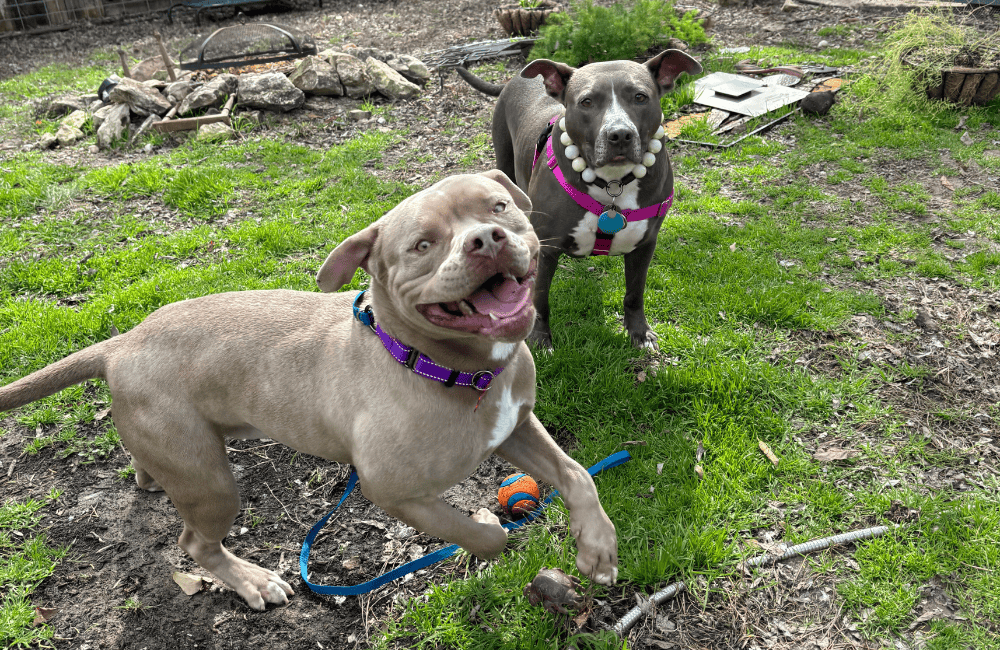STEPS FOR REHOMING YOUR DOG
Call Your Shelter/Rescue Organization or Dog’s Breeder
Before you do anything else, call the person or entity you got your dog from and ask for help. Some organizations require that the dog be returned to them, so be sure to check your contact and call before considering any other avenues.
Evaluate Your Dog’s Adoption Potential
To successfully find a new home, you need to be realistic about your dog’s adoption potential. Look at your dog as if you were meeting him for the first time. What kind of impression would he/she make? What would make him/her stand out as adoptable?
What kind of home do you want for your dog? A large fenced yard? Another dog to play with? Children? No children? Make a list of what you feel is most important for your dog, then get real on expectations. What kind of people are you looking for? What are you willing to compromise on? Once you have a firm idea of what you’re looking for, it will be easier to plan your search.
Get Your Dog Ready
Your dog will be much more adoptable if he or she is clean and healthy.
- First, take him to the vet for a check-up. Ensure they are up-to-date on all vaccines and preventatives.
- If your dog is not spayed or neutered, do it now! Spaying or neutering will assist in making sure that your pup ends up in caring and compassionate hands, and that they will not be used for backyard breeding. It is one of many way to ensure that a family who wants a best friend and family member will adopt your dog. If you cannot afford the cost of surgery, check with your vet, local shelter or rescue groups (including Love-A-Bull) for information about low-cost spay and neuter programs that are available. Call these numbers for low-cost spay/neuter referrals and vouchers: 1-800-248-SPAY or 1-800-321-PETS.
- If your dog has not been microchipped, this is a great time to do it! It’s not unusual for newly adopted dogs to get loose and become lost. The change in environment and family can be disorientating. In this instance, a microchip will help your dog get back to you so that you can get in touch with their new family, who should update the dog’s microchip contact information to be current.
- Groom your dog. You want your dog to look beautiful and make a good impression. Be sure to give them a bath, nail trim and ear cleaning. If you cannot do these things yourself, enlist the help of a groomer. Consider purchasing a martingale collar so your dog does not slip out of their collar in their new environment.
- Set an adoption fee. The fee should cover any reasonable medical expenses (e.g., routine or preventative care) and possible new items, such as a crate, food, bowls, collar/leash you are willing to part with to set your dog up for success in their new home. An adoption fee may also help ward off individuals who are looking for a dog to breed, fight or not properly care for.
Advertising
Word of mouth often doesn’t go very far, so don’t be afraid to use any marketing avenue at your disposal. Ways to advertise include posting flyers at veterinarians’ offices, groomers — anywhere there is a public bulletin board. Consider social media outlets, such as NextDoor, as well as websites like Petfinder, Adopt-A-Pet and Paws Like Me. Done right, marketing is the most effective way to reach the largest number of people.
Additional tips:
- Your ad should give a short description of your dog, their needs, your requirements for a home and of course, your contact information. The description should include breed, color, sex, weight, etc.
- Emphasize your dog’s good points: Are they friendly? Housebroken? Crate-trained? Loves kids? Do they do tricks? Any training? Keep it detailed, but don’t exaggerate (knowing their name doesn’t necessarily make them “well-trained”!).
- State any definite requirements you might have for your dog’s new home: fenced yard, no cats, kids over age 10, etc. Try to say these in a positive way — for example, “older children recommended” sounds better than “no kids under 10.” If your dog does not like other pets, say “should be only pet” rather than “doesn’t like other animals.” If your dog is leash reactive, say “needs help with leash walking,” etc.
- Always state that references are required and avoid the phrase “free to a good home.” This tells people that you’re being selective and not going to give your dog to just anyone. Requiring references and a fee will help deter individuals with possible bad intentions from contacting you.
- Be sure to include some good-quality photos that highlight your dog’s looks and personality. For flyers, use a free online photo editor like Canva to make them appealing!
Don’t be discouraged if your phone isn’t ringing right away. Most people give up too soon. It can take a month or more to find a new, suitable home for your dog, so plan on advertising for several weeks.
Are people contacting you about your dog?
Then check out our information on screening potential adopters in order to ensure your dog is going to the best home possible.
[Content adapted from Pit Bull Rescue Central: Pet Rehoming Considerations]

